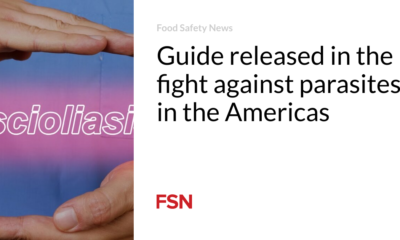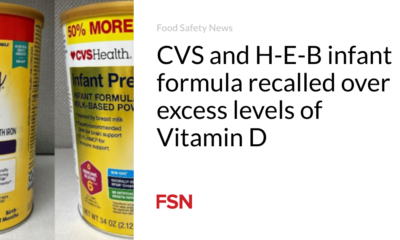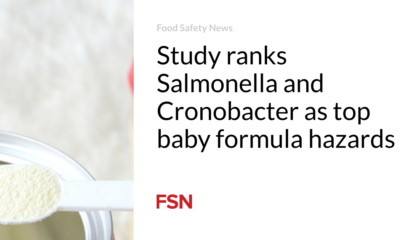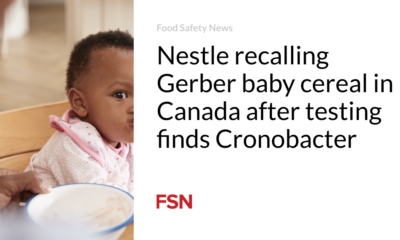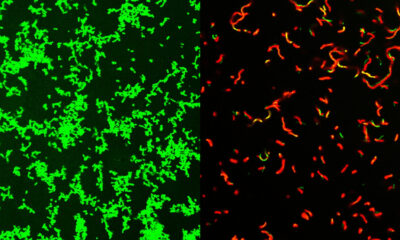Food
The fight against Cronobacter goes far beyond infant formula

Dr. Michael Hansen, Senior Scientist at Consumer Reports contributed to this article.
The 2022 infant formula crisis drew renewed attention to the dangers of Cronobacter infections in newborns, but recent research has made it clear that reducing these risks may be significantly more complex than many of us expected.
This conclusion is based on a better understanding of the ecology of the pathogen and in particular the results of a recent study released by IEH Laboratories, which provides a better understanding of the bacterial pathogen itself by finding it in the home environment and in other foods. It has become clear that the link between Cronobacter sakazakii and powdered infant formula (PIF) may not be as simple as we initially thought. While the conventional narrative has pointed to the production environment as the source of the pathogen, this new research suggests that the home environment and food may also play a role.
Our understanding of the pathogen involved in sickening infants has evolved over time. The first attention paid to this pathogen was in 1961, when an outbreak of Cronobacter occurred infections in infants (newborns) in the United Kingdom. In 1979, a number of cases were also reported among newborns in Macon, Georgia.
At the time, the pathogen responsible for these cases was identified as Enterobacter sakazakiia type of bacteria known to colonize the intestines of animals and humans. In 2001, there was an outbreak of E. sakazakii in a neonatal intensive care unit (NICU) in Tennessee, involving nine infants who were given a particular brand of PIF. When tested, E. sakazakii was found in both opened PIF fed to NICU patients and in unopened PIF with the same batch number. They appeared to be identical based on the Pulsed-field gel electrophoresis (PFGE) pattern – which was the standard detection method at the time – clearly implying that the PIF was the source of the pathogen. This led to a recall by the manufacturer.
Historically only approx 30 percent of Cronobacter sakazakii cases involving invasive disease in infants in the US have been associated with contaminated powdered infant formula. But in those cases, the exact strain of C. sakazakii that made these babies sick was never found in unopened PIF, except during the 2001 Tennessee NICU outbreak. This raises the question of whether other sources of C. sakazakii were the cause of could be the contamination, especially considering that previous studies have found the same strain of C. sakazakii making babies sick in the home environment, specifically in those sick babies’ kitchens.
Other new scientific findings have changed the way we look at the pathogen. By 2008, scientists had realized that E. sakazakii was not just a single species, but actually consisted of seven different species in the Cronobacter gender. The Cronobacter spp linked to most cases of neonatal meningitis was named C. sakazakii, although the other species have also been linked to human disease. Further genetic research suggested that the native environment in which Cronobacter evolved was not located in the intestines of animals, but rather was associated with the roots of plants. This finding suggests that Cronobacter would be more common in the environment and perhaps even in plant foods.
This recent IEH study provided additional evidence as it found that Cronobacter spp. and C. sakazakii, occurred both in the home environment and in various foods. This broad survey examined 263 homes and more than 4,000 retail food items, and the results were stunning.
About a quarter of homes contained C. sakazakii, with the highest incidence found on floors, especially in the hallway (21 percent), and in the kitchen.
Of the 4,009 foods examined, five percent tested positive for C. sakazakii, while the incidence was higher for specific food categories; it was most common in grains/pastries/flours (25.8 percent), nuts/nut butters (10.1 percent) and seeds/sprouts/beans (9.9 percent). The results of this study provide a good follow-up to a more limited test of food products by FDA scientists in 2022, which identified the presence of pathogenic C. sakazakii. in foods and recommended more study. As the FDA concluded: “Finding virulent C.sakazakii of plant origin with significant genomic signatures of clinically relevant STs [sequence types] suggests that these foods may serve as potential transmission vehicles and supports expanding the scope of continued surveillance of this important foodborne pathogen.”
In addition, as part of the IEH study, testing of 386 high-quality genetic sequences of Cronobacter spp. and C. sakazakii isolates collected from homes and food revealed significant genetic diversity in the samples, indicating that the results are not due to contamination. In other words, if contamination of the samples had occurred, there would have been more accurate genetic sequences in multiple samples.
Also, the use of Whole Genome Sequencing (WGS) revealed that some of the isolates collected from homes showed striking genetic similarity to known C.sakazakii pathovars (e.g., strains of C.sakazakii found in sick infants). One of the most common strains found was ST4, which has been linked to neonatal meningitis. Indeed, ST4 was the most common C.sakazakii found on kitchen surfaces and floors and also on some food products – pet food and nuts and peanuts.
Finally, genes associated with resistance to multiple classes of antibiotics were found in most or all genomes. Genes associated with infectivity and host resistance (e.g. virulence) were also found in the majority of genomes. More importantly, most of these genes were found on mobile genetic elements, meaning they can be transferred much more easily between Cronbacter species.
On July 20, 2024, the Canadian Food Inspection Agency issued a to remind on Baby Gourmet Organic brand Banana Raisin Oatmeal Cereal due to the presence of Cronobacter spp, showing that Canada considers it an adulterant in foods beyond powdered infant formula.
Given the findings of the IEH and FDA investigations, it appears that all Cronobacter species – or at least C. sakazakii – should be declared adulterated for some foods, such as grains, baked goods, flours, or foods made from them. nuts and pet food. Protecting babies from the risks of this potentially deadly bacteria will therefore require action that goes beyond stepping up efforts to ensure that infant formula is free from contamination.
(To sign up for a free subscription to Food Safety News,click here)

